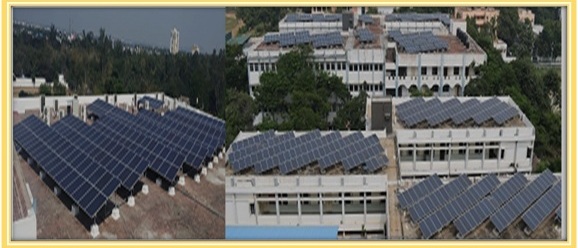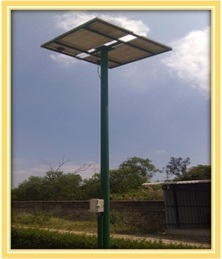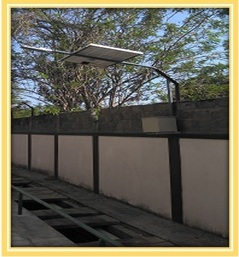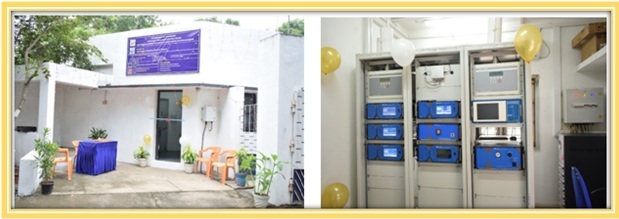Crescent Sustainability Initiatives
Affordable and Clean Energy (SDG 7)
The global challenge of climate change necessitates a robust policy framework that promotes clean energy technologies, particularly solar power. The United Nations emphasizes the critical role of renewable energy in mitigating climate change and achieving sustainable development goals. In this context, the Government of India (GOI) and the Tamil Nadu Government have established comprehensive policies aimed at facilitating the transition from fossil fuels to cleaner energy sources. These policies are designed to engage a wide range of stakeholders, ensuring that they are socially acceptable and economically viable. By creating an enabling environment through financial incentives and regulatory frameworks, these governments aim to attract private sector investments, ultimately enhancing energy efficiency across various sectors.
National Initiatives: The Jawaharlal Nehru National Solar Mission’s Impact
The Jawaharlal Nehru National Solar Mission (JNNSM) https://www.seci.co.in/upload/static/files/mission_document_JNNSM(1).pdf serves as a cornerstone of India’s solar energy policy, launched in 2010 to position the country as a global leader in solar power. The mission has set ambitious targets, including achieving 100 GW of installed solar capacity by 2022, and emphasizes the importance of grid connectivity, solar thermal applications, and off-grid systems. This initiative not only aims to bolster India’s energy security but also addresses climate change challenges by promoting the development and deployment of solar technologies. The Tamil Nadu Government has aligned its policies with these national objectives, implementing various programs that encourage the adoption of solar energy in both urban and rural settings https://cms.tn.gov.in/sites/default/files/documents/energy_2012_2013.pdf.
Institutional Leadership in Solar Energy: BSACIST’s Pioneering Efforts
At the institutional level, B.S. Abdur Rahman Crescent Institute of Science and Technology (BSACIST) exemplifies the effective implementation of solar energy policies. The institute has established multiple rooftop solar power plants with a total capacity of 650 kWp, significantly contributing to its energy requirements while reducing dependence on conventional energy sources. These installations are part of a broader strategy to harness renewable energy, which includes solar water heating systems and solar street lighting projects. By integrating solar power into its infrastructure, BSACIST not only supports the Tamil Nadu Government’s renewable energy initiatives but also serves as a model for other educational institutions to follow.
Collaborative Progress in Renewable Energy: A Path Towards Sustainability
Overall, the collaborative efforts between the UN, GOI, and the Tamil Nadu Government in developing clean energy policies have paved the way for significant advancements in solar energy implementation. Institutions like BSACIST play a vital role in this transition by adopting and promoting renewable energy technologies, thereby contributing to a sustainable energy future. As these policies continue to evolve, the focus on clean energy technology will remain crucial in addressing the pressing challenges of climate change and energy security.
Holistic Sustainability: Transforming Campus Energy Ecosystem
By integrating multiple approaches – solar power generation, energy-efficient technologies, smart infrastructure design, and collaborative student-driven projects – B.S. Abdur Rahman Crescent Institute of Science and Technology, has created a holistic framework for upgrading buildings to higher energy efficiency. The institute’s commitment goes beyond mere technological implementation, fostering a culture of sustainability and innovation. These strategic upgrades not only reduce operational costs and carbon footprint but also serve as a model for sustainable institutional development, demonstrating how existing infrastructure can be transformed into energy-efficient, environmentally responsible spaces.
Strategic Solar Infrastructure: BSACIST’s Comprehensive Energy Efficiency Approach
B.S. Abdur Rahman Crescent Institute of Science and Technology (BSACIST) has implemented a comprehensive strategy to upgrade existing buildings to higher energy efficiency through innovative renewable energy solutions. As part of its ‘Green Campus’ initiative, the institute has installed multiple rooftop solar photovoltaic power plants with a total capacity of 650 kWp, strategically positioned across various campus buildings. These solar installations include a 550 kWp grid-tied plant on academic buildings and a recently added 100 kWp plant in the New Architecture Block and CIIC Block, demonstrating a systematic approach to energy infrastructure upgrades.
Figure VII (4.4) – 1 : Solar Panel Installed at Roof Top in Various Buildings

Quantifying Success: Solar Power Generation and Financial Savings
The solar power implementation has yielded significant energy efficiency improvements.
Plant | Units | Amount Saved |
150Kwp | 16,14,426 | 1,47,77,494 |
100kWp | 12,24,046 | 1,13,85,248 |
300kWp | 17,59,980 | 1,72,16,042 |
New 100kWp | 3,31,420 | 33,33,444 |
Total | 49,29,872 | 4,67,12,228 |
Table VII (4.4) – 1 : Total Solar Power Generation – 650kWp up to from 2014 to 2023
These solar installations now constitute 18% of the total electricity consumption since June 2014, representing a substantial upgrade in the campus’s energy efficiency infrastructure.
Innovative Energy Solutions: Beyond Solar Power Generation

Figure VII (4.4) – 2 : Solar Water Heater – KBA Men’s Hostel, Ladies Hostel and Staff Quarters
Beyond solar power, BSACIST has implemented complementary energy-efficient technologies to upgrade existing buildings. A notable example is the installation of solar water heating systems with a total capacity of 39,500 litres, equivalent to 365 electric geysers of 2kW capacity. These systems are strategically placed in Men’s Hostel blocks, Ladies Hostel, and New Staff Quarters, estimated to save approximately 24 lakhs in power consumption annually. The institute has also introduced innovative solutions like zero-export devices to manage surplus solar power generation and prevent potential damage to diesel generator sets.
Block | No. of tanks | Capacity in litres |
Men’s Hostel | ||
A Block | 20 | 5000 |
B Block | 6 | 3000 |
C Block | 6 | 3000 |
D Block | 8 | 4000 |
Main block | 20 | 5000 |
PG block | 12 | 3000 |
Ladies Hostel | ||
Main block | 10 | 5000 |
Annexure Block | ||
New Block Phase 1 | 17 | 5750 |
Staff Quarters | ||
New Staff Quarters | 23 | 5750 |
Total Capacity | 122 | 39,500Litres |
Table VII (4.4) – 2 : Capacity in Litres
Smart Infrastructure: Collaborative Energy Management Strategies
To further enhance energy efficiency, the institute has developed additional infrastructure improvements. Solar street lighting projects have been implemented along the road connecting staff quarters to the men’s hostel and the architecture block – a collaborative effort between third-year electrical engineering students and the estate electrical department. The zero-export device ensures that excess power generated by the solar power plant does not damage the diesel generator sets, while allowing the solar power to be shared across the campus grid during load shedding.


Figure VII (4.4) – 3 : Solar Street Lights @ Sports Village & Near Architecture Block
The Tamil Nadu Pollution Control Board, in collaboration with B.S. Abdur Rahman Crescent Institute of Science and Technology, inaugurated the Continuous Ambient Air Quality Monitoring Station (CAAQMS) on the institute’s campus. This initiative marks a significant advancement in the region’s efforts to monitor air quality and develop policies related to clean energy technology. The establishment of the CAAQMS is a crucial step towards understanding and managing air pollution, thereby supporting the broader goals of environmental sustainability.
This process underscores the collaborative commitment of governmental and educational institutions to enhance air quality monitoring, which is essential for informing effective clean energy and energy-efficient technology policies.
The CAAQMS will play a vital role in providing real-time data on air quality, which is instrumental in assessing the impact of various energy sources. This data will inform strategies aimed at transitioning from fossil fuels to cleaner alternatives, thereby supporting regulatory frameworks and engaging stakeholders in the importance of air quality management. Overall, the establishment of the CAAQMS represents a proactive approach to environmental governance and clean energy policy development.

Figure VII (4.4) – 4 : Continuous Ambient Air Quality Monitoring Station (CAAQMS)
Analysis and Interpretation of January 2023 Pollutant Data
Key Findings
Daily Averages:
The average pollutant levels for January 2023 are as follows:
- SO2 (Sulfur Dioxide): 8.13 µg/m³
- NO2 (Nitrogen Dioxide): 26.21 µg/m³
- PM10 (Particulate Matter <10µm): 84.85 µg/m³
- PM2.5 (Particulate Matter <2.5µm): 50.89 µg/m³
Maximum and Minimum Levels:
- Maximum Levels:
- SO2: 8.4 µg/m³
- NO2: 49.38 µg/m³
- PM10: 167.77 µg/m³ (indicating significant emissions events)
- PM2.5: 124.97 µg/m³
Trends Over Time
While daily variations are not fully detailed, the recorded spikes in PM10 and PM2.5 levels suggest significant air quality degradation on specific days. Correlating these peaks with potential energy policy impacts or industrial activities can provide insights into pollution sources and inform future clean energy strategies.
Interpretations
Air Quality Impact:
The recorded levels of SO2 and NO2 are within prescribed standards, indicating compliance with health regulations. However, the elevated PM10 and PM2.5 levels exceed normal thresholds, highlighting potential health risks, particularly for respiratory and cardiovascular systems. This underscores the urgent need for policies aimed at reducing particulate emissions.
Policy Implications:
The data serves as a critical resource for policymakers in developing clean energy and energy-efficient technology initiatives. The elevated levels of PM10 and PM2.5 necessitate immediate attention and the implementation of stricter regulations on particulate emissions. This could involve:
- Promoting cleaner technologies in industrial sectors.
- Enhancing monitoring of emissions sources to better understand their impact on air quality.
Recommendations for Mitigation
- Transition to Renewable Energy:
- A key strategy for reducing particulate emissions is transitioning to cleaner energy sources. Emphasising renewable energy in divestment policies aligns with this objective and supports sustainable energy development.
- Public Awareness Campaigns:
- Initiating campaigns to raise community awareness about air quality issues can foster public engagement in monitoring and advocating for clean energy practices. This grassroots involvement is vital for supporting policy changes.
Future Monitoring
Ongoing air quality monitoring is essential for effective policy development. Implementing a real-time measurement system can facilitate timely responses to pollution sources, allowing for adaptive policy adjustments that promote air quality improvement and align with clean energy initiatives.
The January 2023 data provides valuable insights into air quality trends and their implications for clean energy policy development. Continuous monitoring and proactive policy measures ensure that air quality meets health standards and supports community well-being. By integrating air quality management with clean energy initiatives, governments can enhance their commitment to sustainable practices, ultimately fostering a healthier environment.
POLICY FOR ENERGY-EFFICIENT RENOVATION AND BUILDING
Issue: 04; Revised on 2023
| Policy Created on | July 2009 |
| 1st Revision amended on | IQAC Meeting held on 27th October 2017 |
| 2nd Revision amended on | IQAC Meeting held on 31st March 2021 |
| 3rd Revision amended on | IQAC Meeting held on 16th June 2023 |
Responsible Executive : Director (IQAC)
Responsible Office : Internal Quality Assurance Cell, Estate Office, and SDG Cell
Contacts : Registrar, Director (IQAC)
The B.S. Abdur Rahman Crescent Institute of Science and Technology is committed to ensuring that all renovations and new constructions on campus adhere to stringent energy efficiency standards. This policy aims to:
- Ensure universal access to affordable, reliable, modern energy services.
- Increase substantially the share of renewable energy in the global energy mix.
- Double the global rate of improvement in energy efficiency
- Enhance international cooperation to facilitate access to clean energy research and technology.
- Expand infrastructure and upgrade technology to supply modern and sustainable energy services, particularly in developing countries.
7.2 REASON FOR THIS POLICY
This policy is established to promote energy-efficient practices in renovating existing infrastructures and constructing new buildings. By adhering to energy efficiency standards, the Institute aims to reduce greenhouse gas emissions, lower operational costs, and contribute to the global efforts to combat climate change, which aligns with SDG 7 – Affordable and Clean Energy.
7.3 RESPONSIBILITIES
7.3.1 Policy Principles
The Institute shall implement the following principles to ensure compliance with energy efficiency standards:
- All renovations and new constructions must achieve recognised building rating systems such as EDGE, IGBC, and LEED.
- Sustainable design features, including using renewable energy sources, shall be integrated into all projects.
- An efficient waste management plan shall be established to minimize waste and promote recycling.
- Rainwater harvesting systems shall be implemented in all new buildings.
- Energy conservation shall be prioritized through the installation of energy-efficient appliances and equipment.
- Regular audits of energy consumption shall be conducted to identify areas for improvement.
- Use of low VOC (Volatile Organic Compounds) materials in construction and renovation to minimize harmful emissions.
- Adoption of eco-friendly housekeeping practices using biodegradable chemicals.
- Implementation of high reflective roofing materials and green roofs to reduce heat island effects.
- Encourage water-efficient landscaping and high-efficiency irrigation technology in new construction projects.
- Support R&D activities towards energy-efficient renovation and building.
- Enhance national/international cooperation to facilitate access to green building technology.
- Dissemination of Policy
- Awareness programs shall be conducted regularly for all stakeholders regarding energy-efficient practices.
- This policy shall be publicly accessible on the Institute’s website and updated as necessary.
7.3.3 Enforcement of Policy
- The Director (Planning and Development) and their team are responsible for monitoring compliance with this policy.
- Compliance shall be communicated to architects, design engineers, and construction workers involved in projects.
7.2.1 – ENERGY EFFICIENCY POLICY.pdf
POLICY FOR DIVESTMENT FROM CARBON-INTENSIVE ENERGY INDUSTRIES
Issue: 04; Revised on 2023
| Policy Created on | July 2009 |
| 1st Revision amended on | IQAC Meeting held on 27th October 2017 |
| 2nd Revision amended on | IQAC Meeting held on 31st March 2021 |
| 3rd Revision amended on | IQAC Meeting held on 16th June 2023 |
Responsible Executive: Director (IQAC)
Responsible Office: Internal Quality Assurance Cell, Estate Office, and SDG Cell
Contacts: Registrar, Director (IQAC)
The B.S. Abdur Rahman Crescent Institute of Science and Technology is committed to divesting from carbon-intensive energy industries, particularly coal and oil, to promote sustainable energy practices and contribute to the global efforts to combat climate change. This policy aims to:
- Ensure universal access to affordable, reliable, and modern energy services.
- Increase substantially the share of renewable energy in the global energy mix.
- Double the global rate of improvement in energy efficiency.
- Enhance international cooperation to facilitate access to clean energy research and technology.
- Promote investment in energy infrastructure and clean energy technology.
7.2 REASON FOR THIS POLICY
This policy is established to minimize the Institute’s carbon footprint by reducing investments in fossil fuels and promoting renewable energy sources. By divesting from carbon-intensive industries, the Institute aligns with the United Nations’ Sustainable Development Goals, particularly SDG 7: Affordable and Clean Energy, and supports the transition to a sustainable energy future.
7.3 RESPONSIBILITIES
7.3.1 Policy Principles
The Institute shall implement the following principles to ensure effective divestment from carbon-intensive energy industries:
- Conduct a comprehensive review of current investments to identify carbon-intensive assets.
- Gradually divest from all investments in coal and oil industries within a specified timeframe.
- Reallocate funds towards renewable energy projects and sustainable technologies.
- Collaborate with financial institutions that prioritize sustainable investment practices.
- Promote transparency in investment decisions and publicly report on divestment progress.
- Engage with stakeholders, including students and faculty, to raise awareness about the importance of divestment from fossil fuels.
- Support research and development initiatives focused on clean energy technologies.
7.3.2 Dissemination of Policy
- This policy shall be publicly accessible on the Institute’s website to ensure transparency.
- Awareness programs shall be conducted regularly for all stakeholders regarding the importance of divestment from carbon-intensive industries.
- Updates on divestment progress shall be communicated through newsletters and reports.
7.3.3 Enforcement of Policy
- The Director (Finance) and their team are responsible for monitoring compliance with this policy and reporting on divestment progress.
- Any breach of this policy may result in a review of investment strategies and potential disciplinary actions as prescribed by the Institute’s code of conduct.


